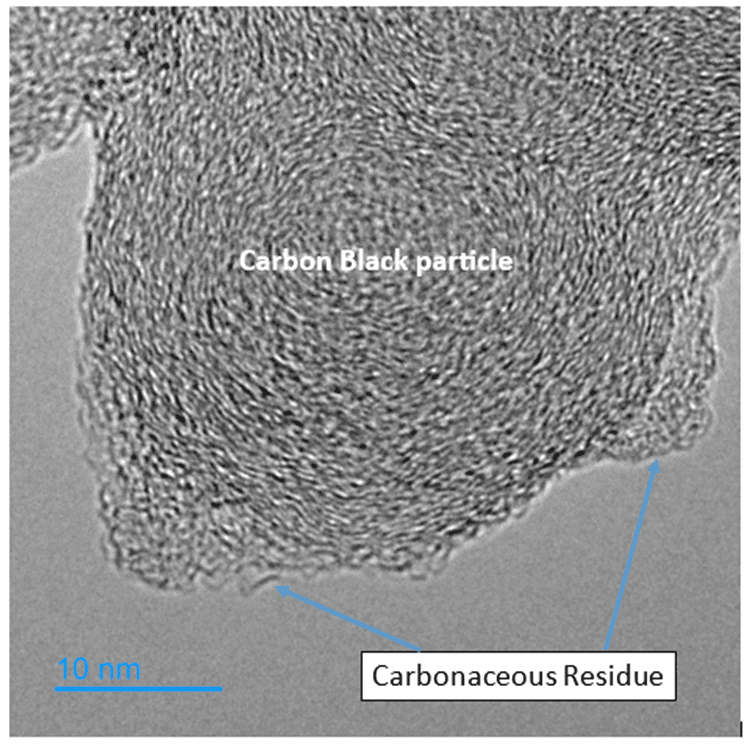BIRLA CARBON BLOG
INSIDER KNOWLEDGE FOR ALL THINGS CARBON BLACK
Characterization of Continua™ SCM – Carbonaceous Residue
Reading Time: 1.75 minutes
Introduction
In part 2 of this series of blogs we described the key parameters that drive the performance of the Sustainable Carbonaceous Material (SCM) created through the pyrolysis of end of life rubber articles in applications.
These have been identified as:
- Carbonaceous residue
- Bound agglomerate size
- Ash Content
- Transmittance
In this blog we will cover Carbonaceous Residue in more detail.
Carbonaceous Residue Formation
During pyrolysis of rubber goods, the organic components are thermally cracked and recovered predominantly as gash and oil products. A portion of this organic matter additionally cokes in-situ, creating carbonaceous residue. This carbonaceous residue can form on both the surface of the fillers in the rubber article and on other surfaces present in the reactor.
When formed on the surface of the fillers, this layer of new carbon coats the carbon black, silica, and other inorganic species binding them together and forming large, bound agglomerates. This carbon layer can be observed in high magnification TEM micrographs. Figure 1 shows areas of carbonaceous residue that coat the carbon black contained in a sample of SCM.
This carbonaceous residue shields the active surfaces of the carbon black and silica aggregates present in the SCM. By milling the raw carbon (char) from the pyrolysis reactor, more of the active surfaces are exposed which increases an SCM's ability to reinforce elastomers.
Conclusion
The carbonaceous residue formed during the pyrolysis of rubber articles has been observed to bind together the filler and other inorganic species present in a sample of SCM. Although this cannot be measured directly, it can be inferred from the dynamic properties (Payne effect) of a reference rubber compound such as D8582.

Dr. Joseph Hallett
Dr Hallett has worked in the rubber industry for over 25 years in a number of roles including product design and development, laboratory management, quality, and customer support. He re-joined Birla Carbon in 2019 and in total has worked in the carbon black industry for over 18 years. His current role is the Technical Lead for Birla Carbon's circular product, Continua™ SCM and was part of the introduction team during the products development. Dr Hallett has a Bachelors Degree in Engineering and his PhD looked at the effect of load case on the performance of rubber compounds.
WANT TO LEARN MORE ABOUT CARBON BLACK AND THE PROPERTIES THAT MAKE IT IDEAL FOR YOUR PLASTICS, COATINGS, AND INKS APPLICATIONS?











Leave A Comment